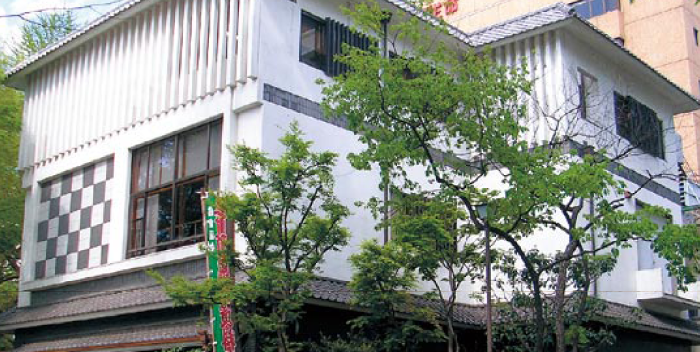
Closed for construction from April 1, 2023 to spring 2025.

Facility Information
This museum was established to teach future generations about the culture of the shitamachi. The shitamachi was originally an area of Edo* where the common people lived. The word shitamachi is composed of the word shita meaning "down" and machi meaning "town," and one can often see it translated into English literally as "downtown." However, shitamachi is not the same as the English word downtown, which refers to a city's central businessdistrict. The shitamachi name originated from the actual level of the land in the area. In Edo, the land to the south-east of Edo Castle (now the Imperial Palace) was lowlands, and the land to the north-west was a plateau, and during the formative years of the city, the lowlands became the place where artisans and merchants lived. This lowlands area near Edo Castle became known as shitamachi.
There were many unique qualities that defined the shitamachi and still exercise an influence over the area today. For example, the shitamachi's high population density resulted in the building of crowded tenement houses called nagaya. These nagaya were made of wood and built very close together, which rendered the region highly susceptible to fire.This living environment bred a people with a unique disposition and way of life. The culture of the shitamachi is the culture of Tokyo's common people, and it contributed greatly to the culture of Edo just as it contributes to Tokyo as a city today.
People's lifestyles change when their living environment changes, and old culture is naturally lost over time. In 1868, Edo was renamed Tokyo and the city began to modernize, but traces of the old ways remained in the shitamachi. The massive destruction caused by the Great Kanto Earthquake of 1923 and the wartime fires of 1945, and the reconstruction following these disasters are what really changed Tokyo. The 1960s saw a development boom spurred on by the 1964 Tokyo Summer Olympics, and this era also saw a dramatic increase in the use of electric appliances, all which further sped the degree of change in the city. The initial movement for the establishment of this museum began during that time.
During this period of rapid change the people did gain convenience and comfort, but they began to lose or forget many other things. The desire to somehow preserve these things for future generations was the basis for founding the museum. Many supporters from within Taito-ku and beyond contributed a variety of items, and the Shitamachi Museum opened in 1980.
*The former name of Tokyo.Visitor Information Closed for construction from April 1, 2023 to spring 2025.
| Admission | Adults¥300(¥200*) Primary/Junior/Senior High School Students ¥100(¥50*) *Special group rate of 20 people or more Free admission for person presenting disability certificate and his/her caregiver |
| Hours | 9:30am-4:30pm (last admission at 4:00pm) |
| Closed | Monday (Open on holiday Mondays and closed on the following Tuesday) December 29-January 1,and on some days for administrative purposes |
| Address | 2-1,Ueno-koen(Ueno Park), Taito-ku, Tokyo Phone:(03)3823 7451 |
| Access | 5 minutes walk from Ueno Station <JR Lines/Keisei Line/Tokyo Metro Ginza and Hibiya Lines> |
| Web site | https://www.taitogeibun.net/shitamachi/ |





